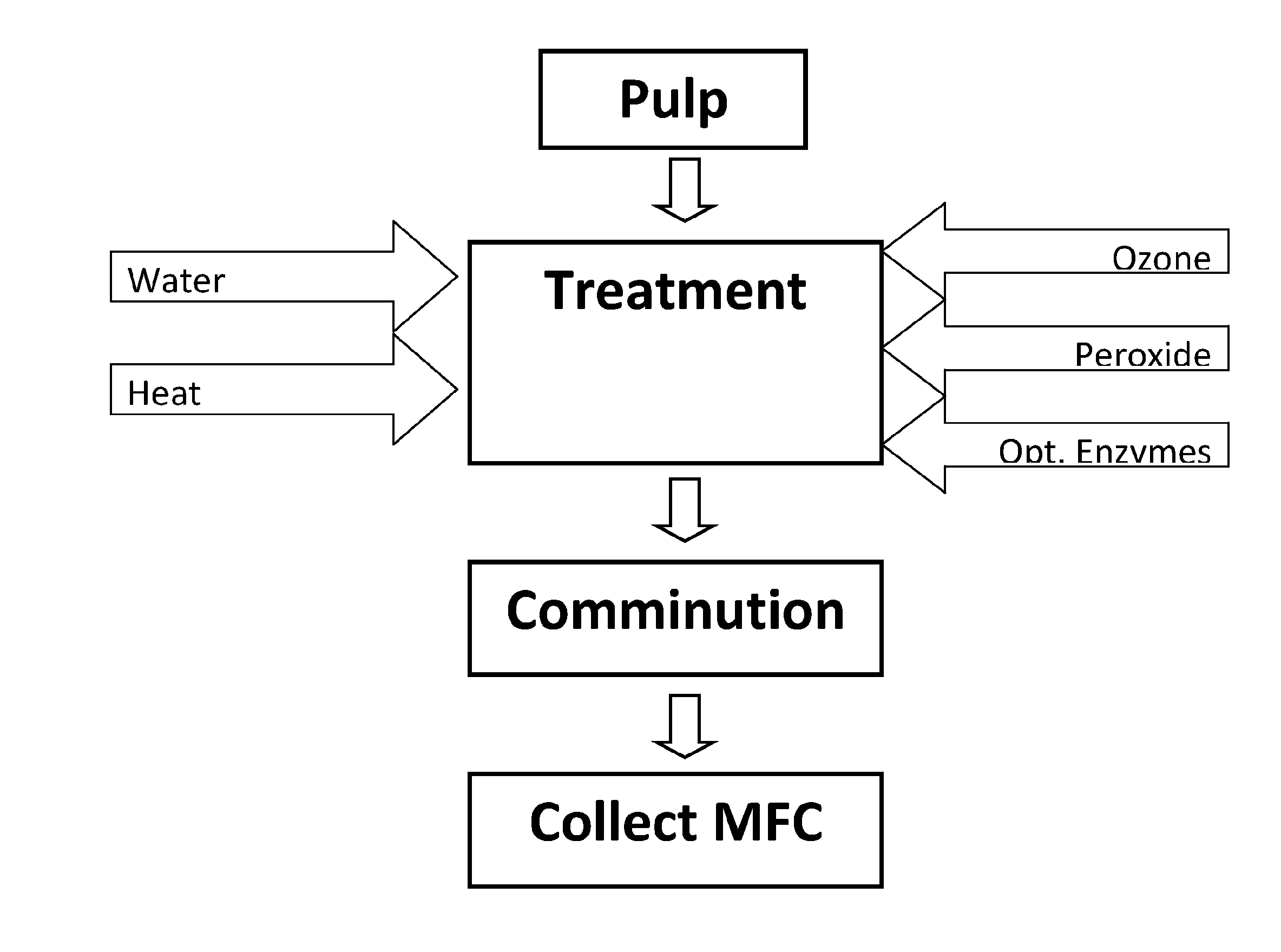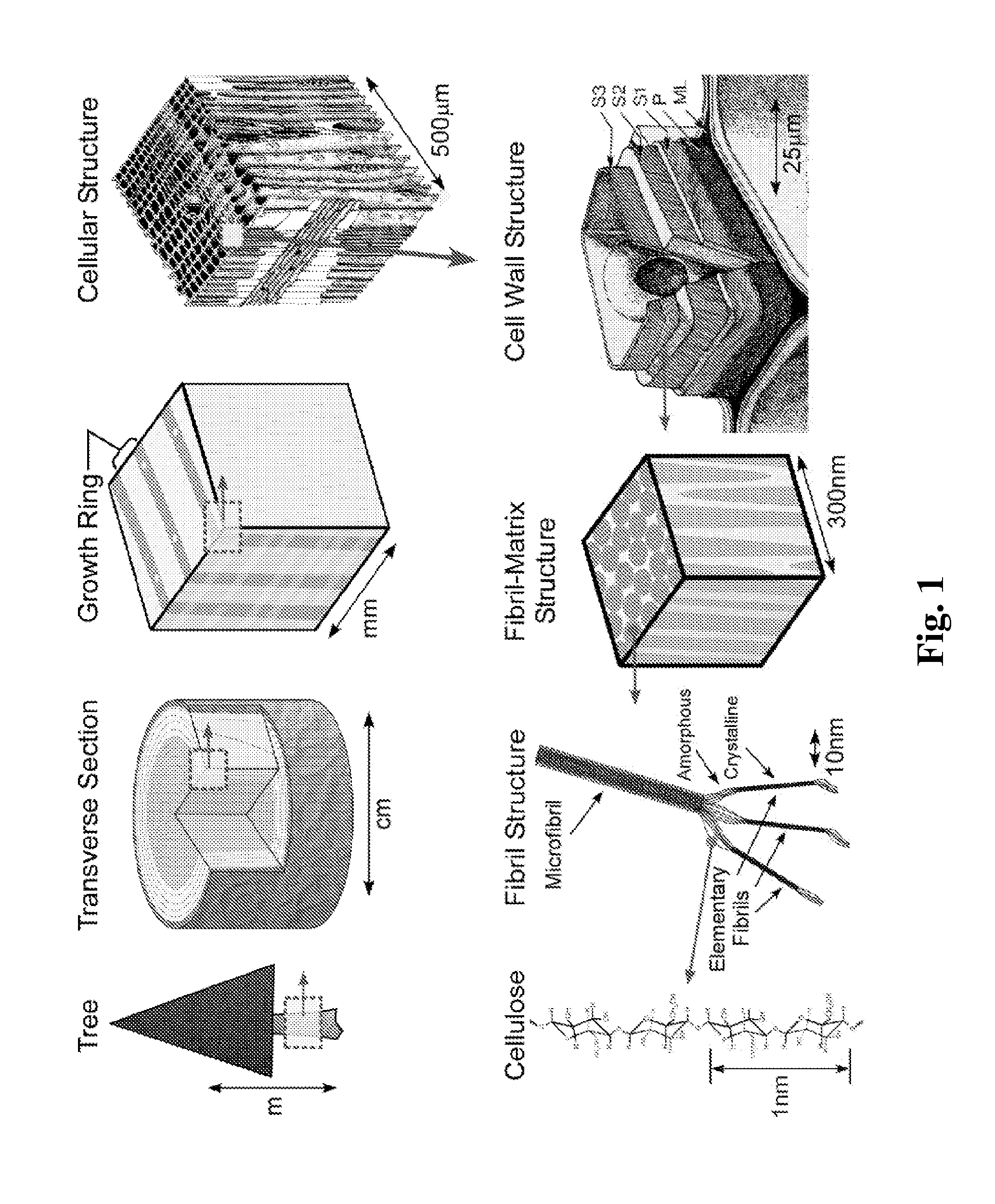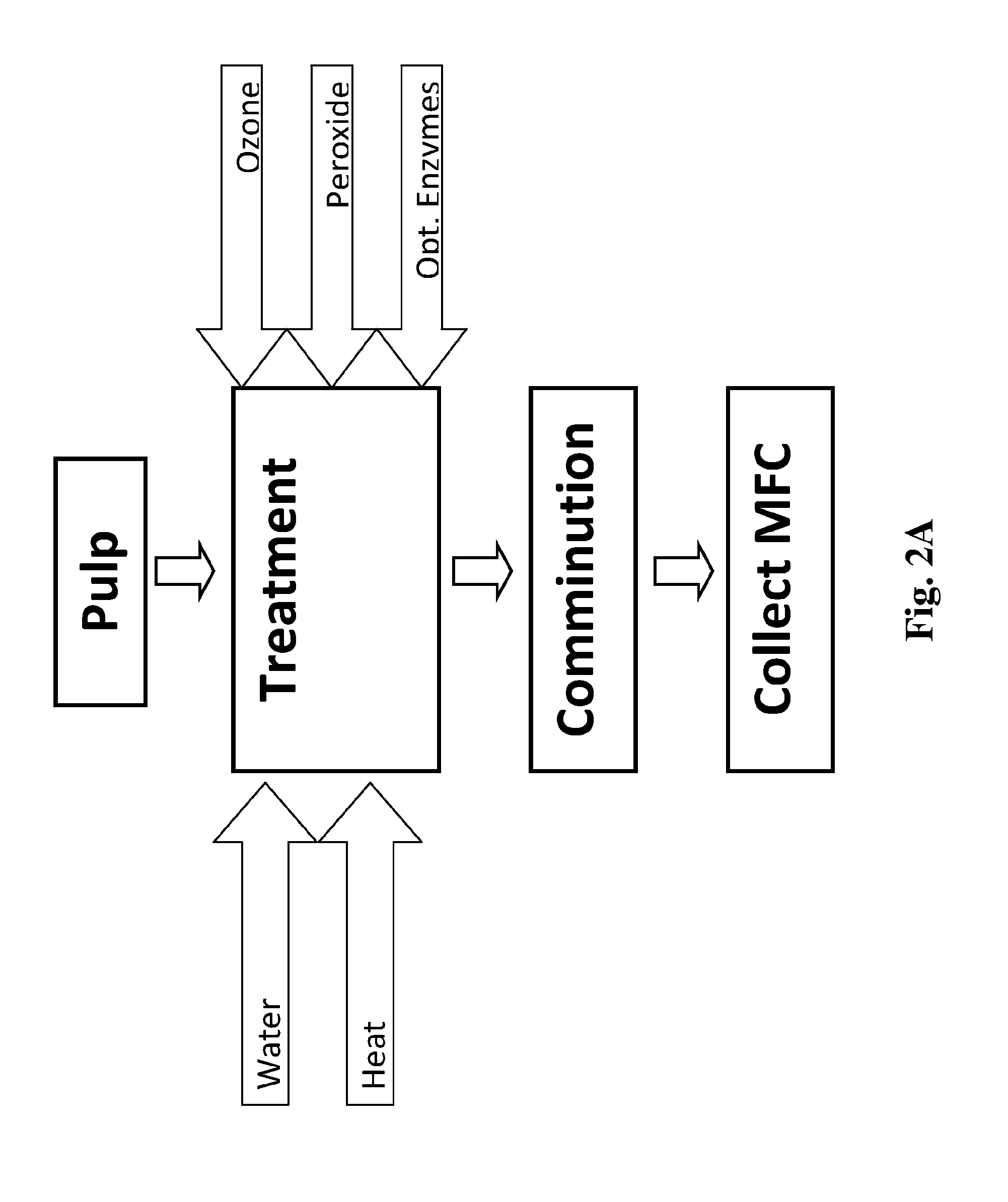Energy Efficient Process for Preparing Nanocellulose Fibers
a nanocellulose and energy-efficient technology, applied in the field of cellulosic pulp processing, can solve the problems of requiring the use of costly materials in the construction of bleaching plants, the inability to completely satisfy the use of oxygen, and the potential environmental effects of chlorinated organics in effluents, etc., to achieve the effect of improving the efficiency of enzymes, and reducing the number of fibros
- Summary
- Abstract
- Description
- Claims
- Application Information
AI Technical Summary
Benefits of technology
Problems solved by technology
Method used
Image
Examples
example 1
Preparation of Comparative Samples
[0074]Kraft process pulp samples of bleached hardwood (Domtar Aspen) were prepared and processed by various methods described in this example.
TABLE 1Sample PrepsSampleTreatmentComminution1none, controlnone, control2nonerefined in a Valley Beater3enzymesrefined in a Valley Beater4none, controlnone, control5ozonerefined in a Valley Beater6TEMPOnone7TEMPOrefined in a Valley Beater
[0075]Two samples (samples 1 and 4) are the unrefined pulp samples as purchased, with no treatment or refining. Sample 2 is refined but not pretreated. All refined samples are treated in a Valley Beater according to Tappi Standard T200. Sample 3 was pretreated with enzymes (Pergalase™ A40 enzyme blend) according to the Pergalase™ recommended procedure. Sample 5 was pretreated with ozone at a relatively high charge level of 2% and peroxide at a charge level of 5% (both based on dry weight of the fiber) for 15 minutes at a temperature of about 50° C. and a pH of about 7. The ozo...
example 2
Charge and Conductivity Testing
[0076]The charge and conductivity of each sample was measured using a Mütek PCD-03 instrument according to its standard instructions. The results are in Table 2 below.
TABLE 2Charge and conductivityMutekconductivitySampleTreatment(meq / dry gram pulp)(mS / cm)1none, control−21102none−111053enzymes−132604none, control−0.91055ozone−112706TEMPO−2705027TEMPO−280560
[0077]This data confirms the previously noted problem associated with the TEMPO treatment, i.e. the high negative charge associated with the chemically modified cellulose, which also results in high electrical conductivity. All other samples, including the ozone treated sample according to the invention, have far less negative charge and conductivity.
example 3
Energy Consumption Testing
[0078]The energy consumed in order to refine each MFC was monitored along with % fines and average fibril length as the comminution proceeded. An ammeter connected to the Valley beater drive motor provided the power measurement for energy consumption and the TechPap Morphi Fiber Length Analyzer provided a continuous measure of the % fines and fiber length as endpoint outputs. As seen in table 1, Sample Nos. 2, 3, 5 and 7 were refined. This experiment allows a calculation of the energy efficiency of each of the several treatment processes—i.e. the amount of energy required to reach a specified endpoint or, conversely, the endpoint that can be achieved with a fixed amount of energy consumed. The data are presented in FIGS. 3-4.
[0079]FIG. 3 illustrates the reduction of fiber length as a function of the gross energy consumed. From this it can be seen that both the enzyme treatment (#3) and the ozone treatment (#5) are more energy efficient than the control (#2)...
PUM
| Property | Measurement | Unit |
|---|---|---|
| length | aaaaa | aaaaa |
| weight | aaaaa | aaaaa |
| concentration | aaaaa | aaaaa |
Abstract
Description
Claims
Application Information
 Login to View More
Login to View More - R&D
- Intellectual Property
- Life Sciences
- Materials
- Tech Scout
- Unparalleled Data Quality
- Higher Quality Content
- 60% Fewer Hallucinations
Browse by: Latest US Patents, China's latest patents, Technical Efficacy Thesaurus, Application Domain, Technology Topic, Popular Technical Reports.
© 2025 PatSnap. All rights reserved.Legal|Privacy policy|Modern Slavery Act Transparency Statement|Sitemap|About US| Contact US: help@patsnap.com



